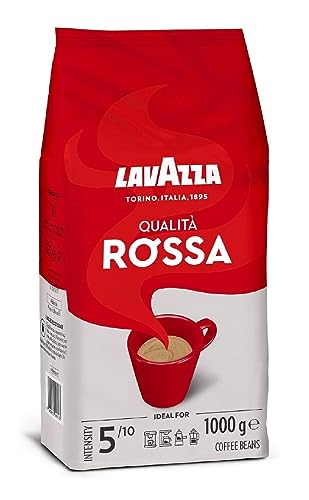The Little-Known Benefits Of Coffee Beans Coffee

What Are Coffee Beans?
The seeds of a cherries like fruit or plant are coffee beans. They grow best at altitudes and in similar climates to ones where they are being grown. They also require specific levels and compositions of soil, moisture and other factors.
They're not just delicious however, they also offer many health benefits. Coffee is a source of the amino acid trigonelline, which when roasted transforms into nicotinic acid (a water-soluble B vitamin). It also contains phenolic acids, including chlorogenic acid, which can help reduce blood sugar.
Origin

The majority of people know what a roasting bean looks like, but very few are aware that it was originally a berry. A coffee bean is actually a seed that is derived from the fruit of a few species of Coffea plants. In most cases the berries split open and contain two beans, but in five percent of all harvested beans one bean does not split. This type of coffee bean is referred to as the peaberry. It is usually manually sorted out and sold separately.
The "Bean Belt" is an area of the globe that lies between the Tropics of Capricorn and Cancer, is where the bulk of coffee is produced. The majority of countries produce coffee using different techniques, each of which has its own flavor characteristic and profile.
The exact source of coffee is in debate, but it is widely thought that the first coffee plants were indigenous to Abyssinia in the present day Ethiopia. The most well-known tale is about a goatherd called Kaldi who observed his goats exuberant and bleating after eating the bright red berries that were growing on nearby shrubs. Kaldi took a bite of the berries and felt a rush of joy. After that, he introduced the drink to his neighbors and its popularity grew. It gained popularity across the Islamic world in the 15th and 16th centuries in spite of Islamic authorities declaring it to be intoxicating which was banned by the Qur an.
Flavor
The taste of coffee beans depends on the region and the species of the coffee plant, as well as on the soil elevation, farming methods and roasting procedure. It is possible to achieve different tastes by altering the temperature and duration of roasting as well as the air flow during roasting.
coffee beans sale of syrup used to flavor coffee beans can affect the flavor. After roasting the beans, they are spray-painted with oil-based flavoring agent and left to sit for 30 minutes. This allows the beans to absorb the oils. The flavored beans are separated and graded.
The addition of flavor to coffee beans lets you customize the taste without altering the texture or color. The flavor of the flavored beans is generally stronger than regular coffee. This is due to the fact that the flavored beans are soaked in flavoring syrup.
The taste of coffee can be influenced by the different spices that are added to it during storage. Whole spices, such as cinnamon sticks, vanilla, and cocoa beans can be mixed with freshly made coffee beans in order to give the beans their own distinct flavor. This is especially effective when roasted coffee beans are stored in a container that is aerated.
Health Benefits
Coffee beans have been linked to numerous health benefits. These benefits include reducing your risk of Alzheimer's disease, the disease that causes Parkinson's and liver damage. The caffeine found in coffee beans has been found to boost memory and cognitive performance. Coffee is a rich source of antioxidants that fight free radicals. Chlorogenic acid found in coffee is believed to help prevent chronic illnesses like heart diseases and diabetes.
Consuming coffee beans has been linked with lower chance of developing type 2 diabetes. Researchers have also found that coffee beans may reduce the risk of developing Parkinson's disease liver disease, Parkinson's, and cancers in the colon and colorectal system. Coffee has been linked to increased brain function, and it could help prevent depression. Various studies have found that the presence of certain acids in coffee could increase levels of serotonin, and dopamine.
While eating coffee beans raw is a good option for the majority of people however, it shouldn't be considered as a substitute to a healthy diet and exercise. It is recommended that no more than 30 beans be consumed in a day, and the effect of caffeine should not be overdone since it can cause adverse effects such as anxiety, jitters and insomnia. Additionally, if you suffer from acid reflux or have sensitive stomachs and a sensitive stomach, you should stay clear of coffee beans.
Preparation
The coffee plant produces a drupe or fruit, which has two seeds (or beans) positioned flat against each other. Each fruit has an outer layer known as the exocarp, and an incredibly thin layer of pulp on top. Before roasting, the coffee seeds are removed, separated and cleaned. The beans can be processed in three ways dry, moist, or a hybrid referred to as wet-processed. The beans are then roasted, and can be ground or left uncooked.
Coffee bean varieties offer many flavor profiles that complement many different drinks dishes, desserts and other recipes. The right choice for a recipe depends on the taste and texture you wish to achieve.
The coffee bean has wax that is intact when it's complete. This layer protects the aroma and flavor compounds of the coffee from air. After grinding,, those compounds are exposed to the air, and they begin to lose their taste over time. The temperature of the water is important when brewing coffee to capture and preserve these flavors. Pouring at a lower temp will extract fewer of the nascent flavor notes, whereas pouring at the higher temperature releases more. This is why it's essential to ensure that you are brewing your coffee at an ideal temperature for your taste. If you don't, the taste can quickly turn bitter and even sour.
